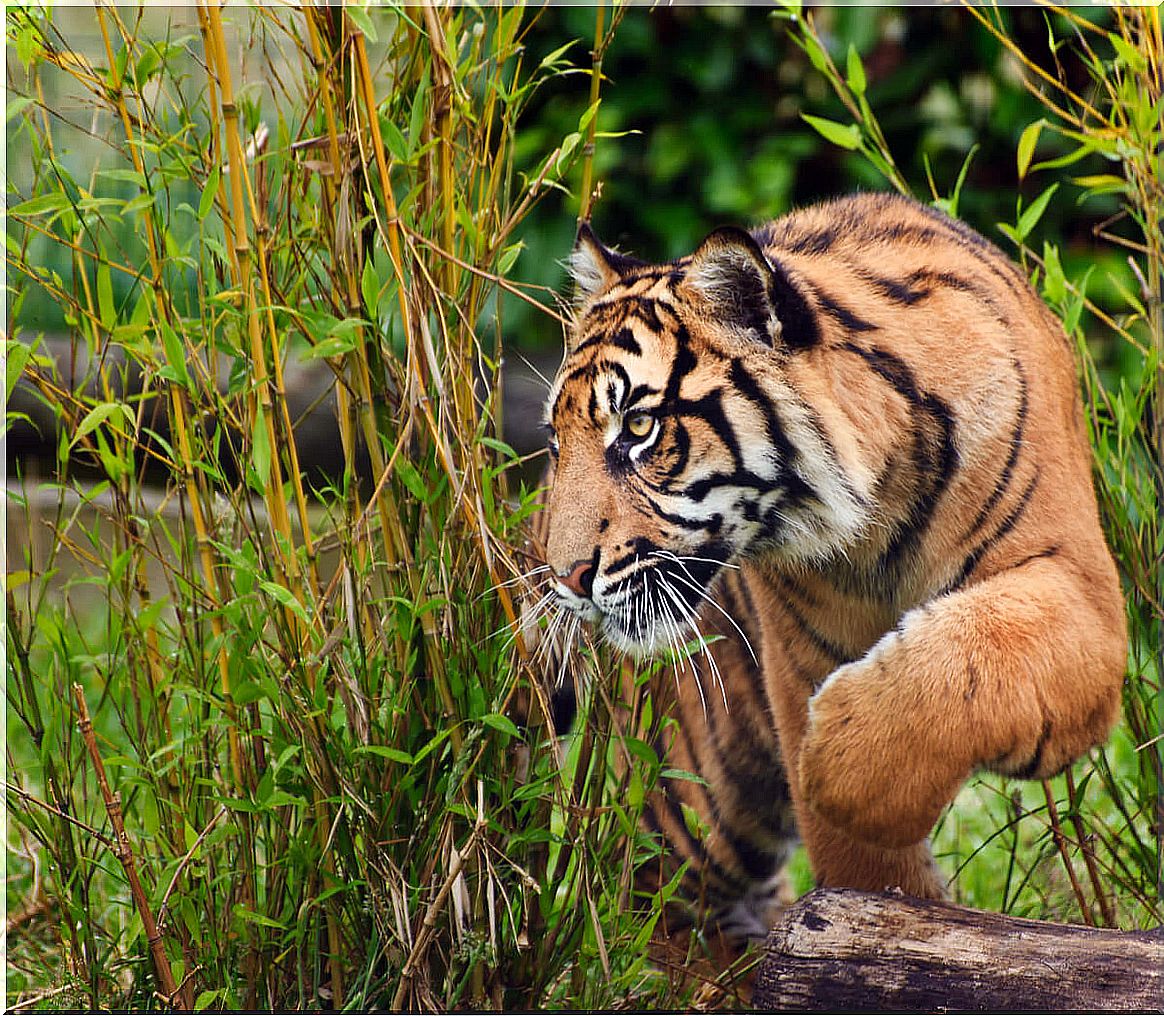Characteristics Of The Sumatran Tiger

The Sumatran tiger is one of the most endangered cats in the world. Loss of habitat is the main threat to this beautiful and majestic animal, despite being highly protected. In addition, this tiger has its own characteristics that make it unique and distinguish it from the rest of the felids that populate the Earth.
What is the way of life of this feline? What distinguishes it from other tigers? Why is it in danger of extinction? We will tell you all this and much more in the following lines.
Habitat and way of life of the Sumatran tiger
Deep in the jungles of the Indonesian island of Sumatra, lives a terrible predator that is the top of the food chain. Once abundant in the lands of this huge tropical island, its habitat has been greatly reduced by human pressure.
Unfortunately, the Sumatran tiger ( Panthera tigris sumatrae ) is a critically endangered (CR) animal, according to the International Union for Conservation of Nature (IUCN). It is a known subspecies of the tiger, which is also threatened.
It is estimated that around 400 to 500 individuals inhabit Indonesian national parks, from the lowland jungle of Bukit Barisan Selatan National Park to the mountainous forests of Gunung Leuser National Park.
In these places, despite environmental protection, the destruction of the jungle is a reality. Aside from the loss of the jungle, an estimated 66 tigers were killed by poachers in the 2000s, making man-made hunting a major threat to this feline.

Characteristics of the Sumatran tiger
The most relevant thing about this subspecies of tiger is that it has its own characteristics that differentiate it from the tigers of the continent. Among them, we find the following:
- Sumatran tigers are the smallest tiger subspecies in existence. This allows them to move more easily through the dense jungle that constitutes their habitat.
- Their characteristic vertical stripes are somewhat more abundant and thinner than that of continental tigers.
- Its beard is more developed than that of other tigers. This difference is especially noticeable in males.
- Despite all this, probably its most distinctive feature is the presence of a membrane between the toes. This membrane makes them excellent swimmers, an ability they use to lead their land prey into the water.
- In terms of weight and measurements, males measure an average of 2.30 meters from head to tail and weigh about 120 kilograms. The females, meanwhile, measure 2.20 meters and weigh around 90 kilograms on average.
All these distinctive features are the consequence of a speciation process that, although slow, continues to take place today. Because the Sumatran tiger lives on an island – isolated from other tigers – its population easily differs from other continental species.
Way of life and diet
The Sumatran tiger is, first and foremost, a carnivorous animal. These cats are solitary predators, hunting at night and stalking their prey with great stealth, before finally attacking them from the back or sides. Their fine sense of hearing and powerful eyesight make them fearsome predators.
Their preferred prey are usually wild boar and deer, but they also sometimes hunt birds, fish, or even larger, more deadly animals such as crocodiles or rhinos. Nothing escapes the clutches of this feline.
Sumatran tiger conservation
The unique characteristics of this subspecies – and the fact that it is highly threatened in its natural environment – make this feline a priority in conservation programs.
The Sumatran tiger is the only living representative of the tiger subspecies that once inhabited the Indonesian islands, such as the Javanese or Bali tiger. For this reason – and because the Sumatran tiger is considered to be on the verge of being a new species – the conservation of this feline is important.
The island of Sumatra undergoes a very serious process of deforestation, in order to obtain plantations of sugar, rubber and palm oil. As a consequence, Sumatran tigers lose their habitat, so their population is in clear decline according to the latest data, which shows a loss of 40% of tigers in the last 40 years.

As you may have seen, the Sumatran tiger is a subspecies of tiger with unique characteristics and highly threatened by the destruction of the jungle, which is why it should be the object of conservation programs. We cannot afford to lose more biodiversity.









